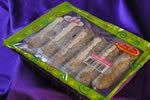
Bees are hard working insect that gives us honey (what else..). As what they say, honey is the only food that never spoils. Honey is primarily from the nectar of plants on which the honey bees extracted and deposits it in their honey comb.
It is high time to invest in the honey bee production. Currently, USA production is very down. They are experiencing a mass bee death with unknown etiology since last year and currently it is still on going. And if their production is down it only means that they need to import from other countries like the Philippines.
Here is an article about Honey Bee production.
Suitable areas for rearing native honey beesColonies of native bees could easily be established in areas where there are plenty of flowering plants throughout the year. Bees in these areas will practically yield more honey.
Having diversified farms, Cavite and Batangas provide good foraging grounds for bee colonies. In Quezon where coconut palms flower throughout the year, bee colonies under coconut plantations would just be alright. Mindanao is another good area to raise honey bees.
One practical method of assessing the suitability of an area for beekeeping is counting the number of wild bee colonies. If the density of bee colonies is high, it means that the area is suitable for bee culture. Continue reading “Honey bee production / Bee keeping”



